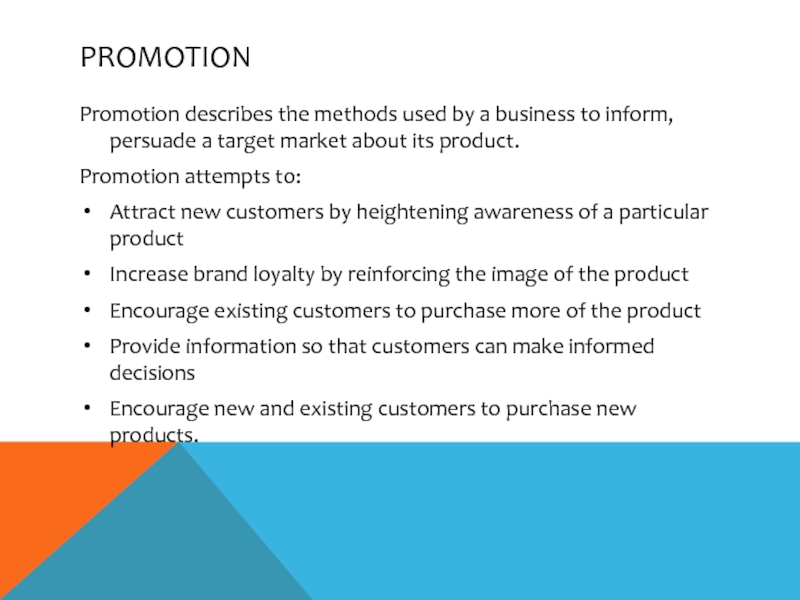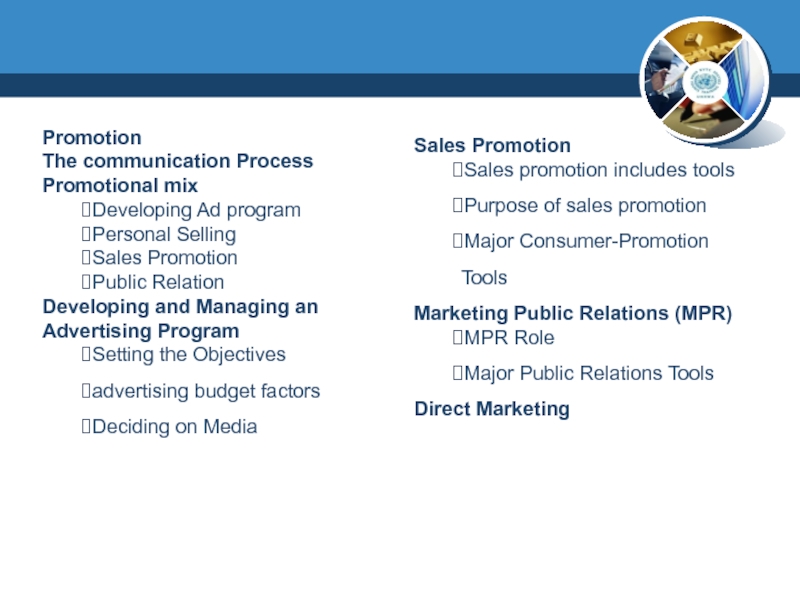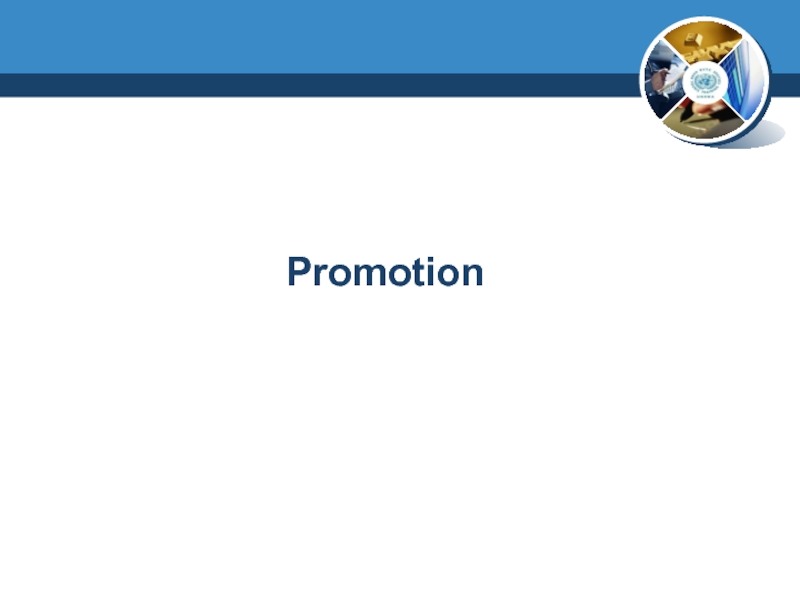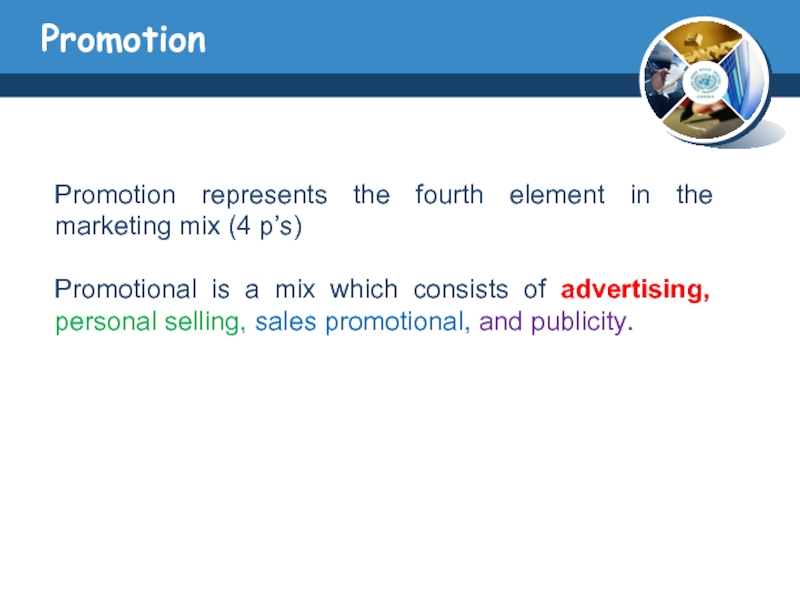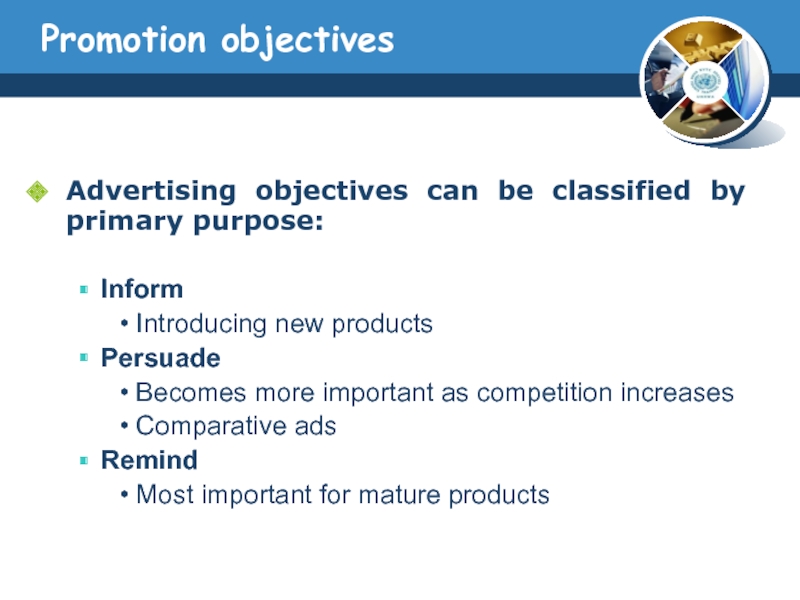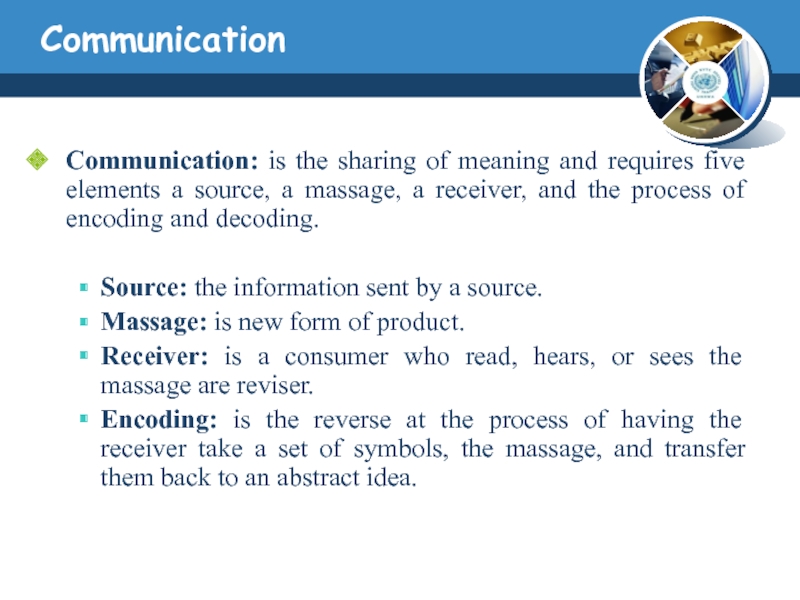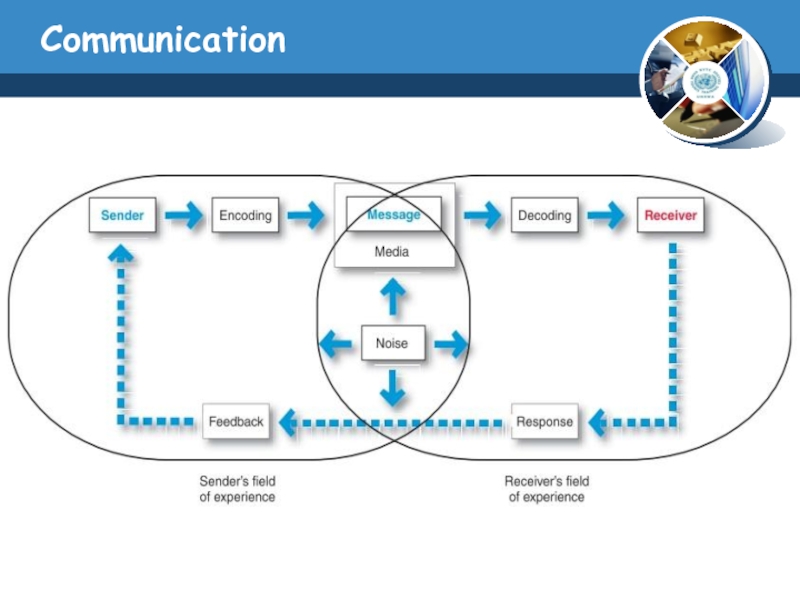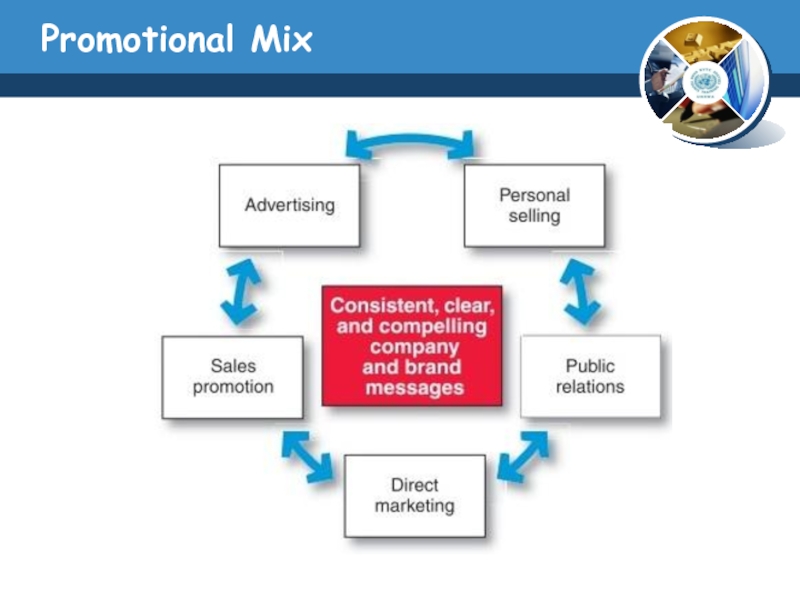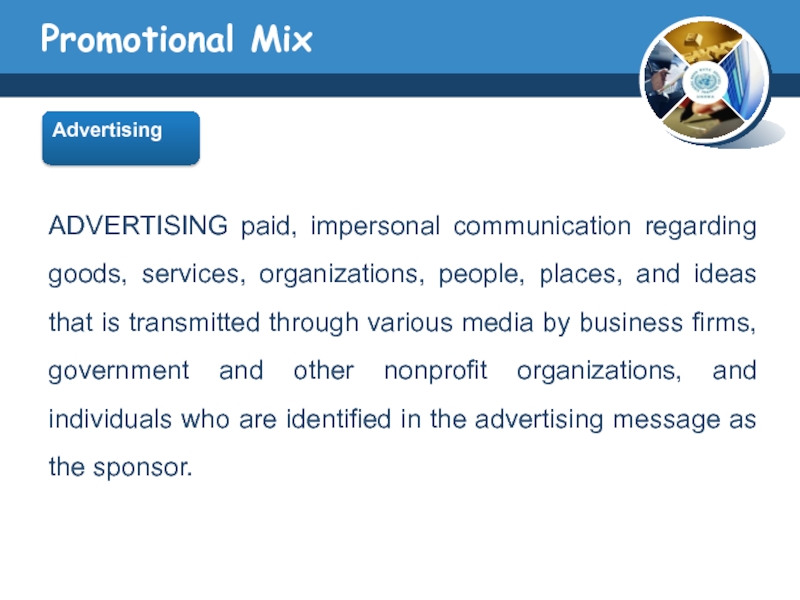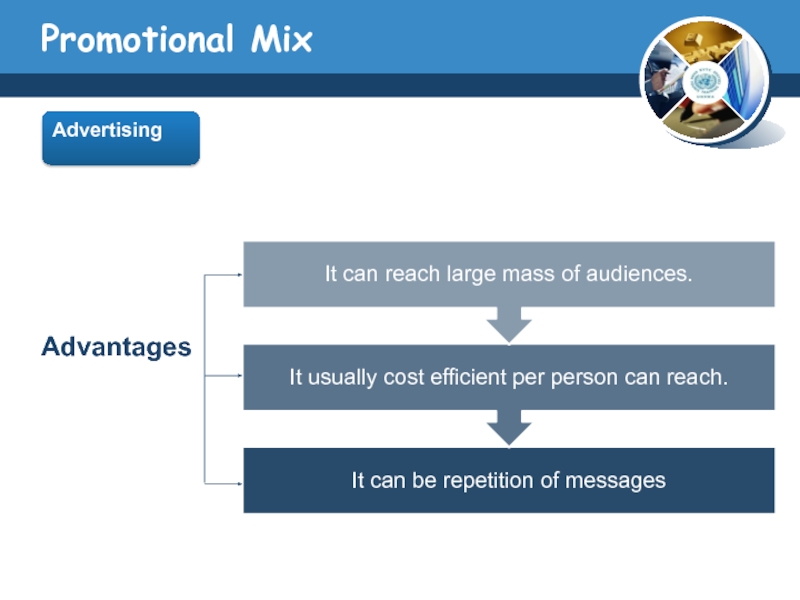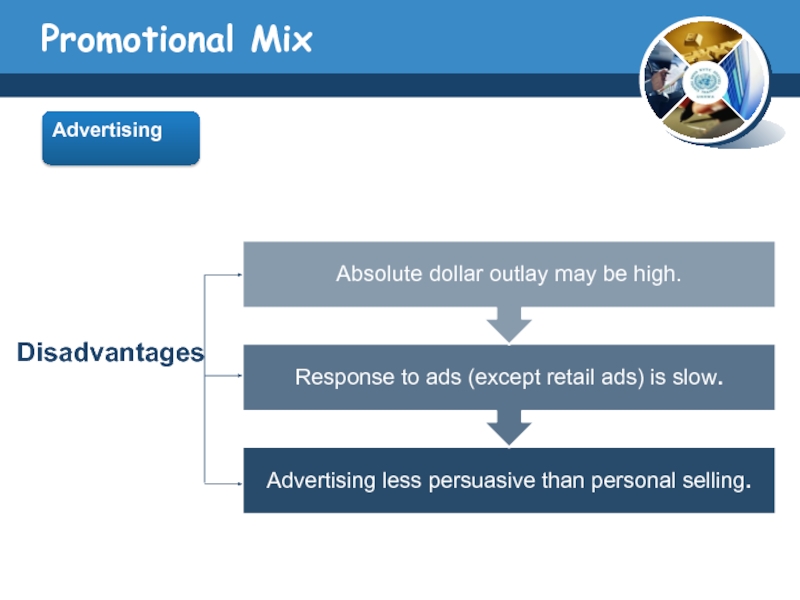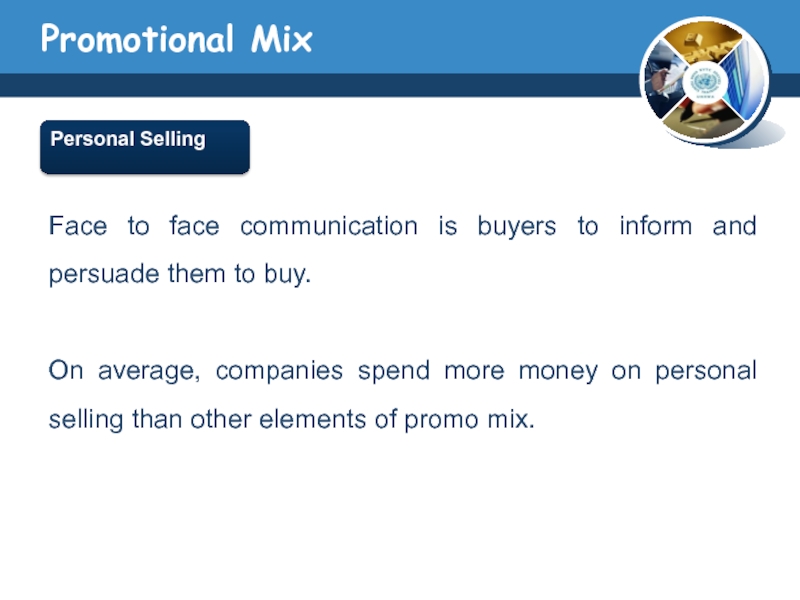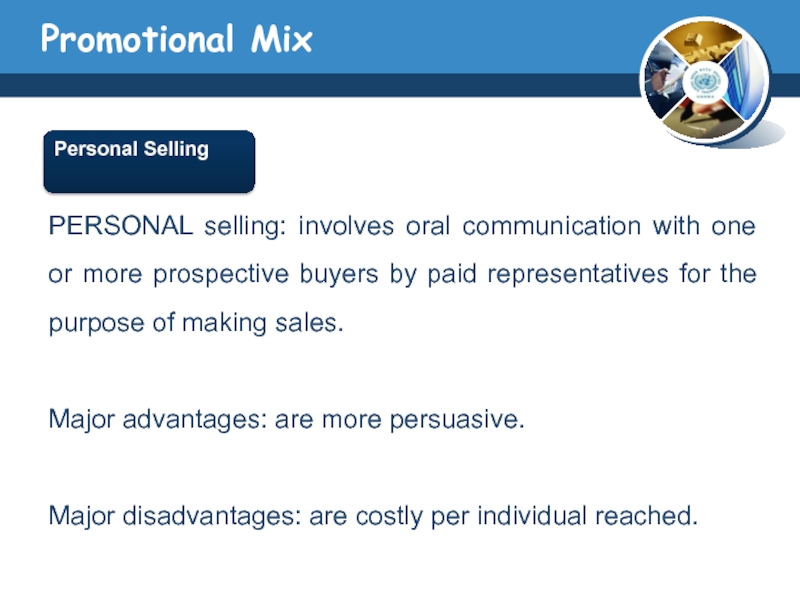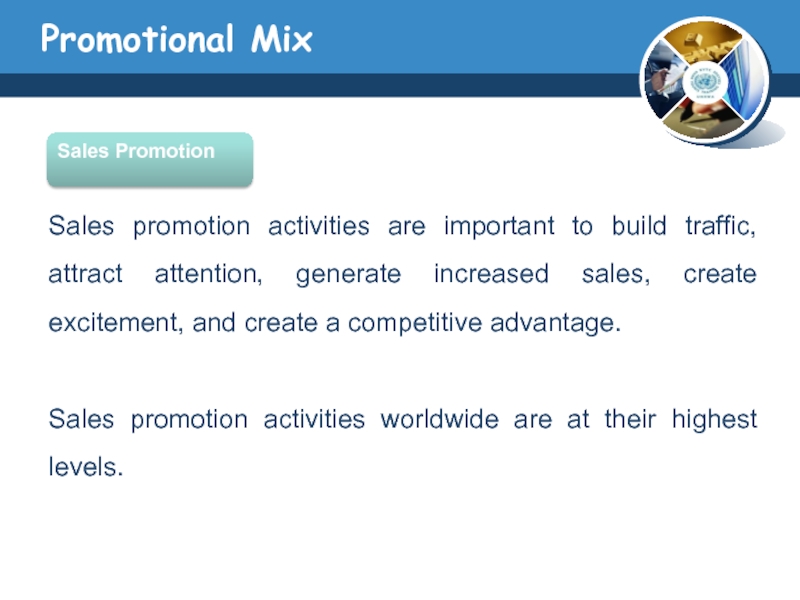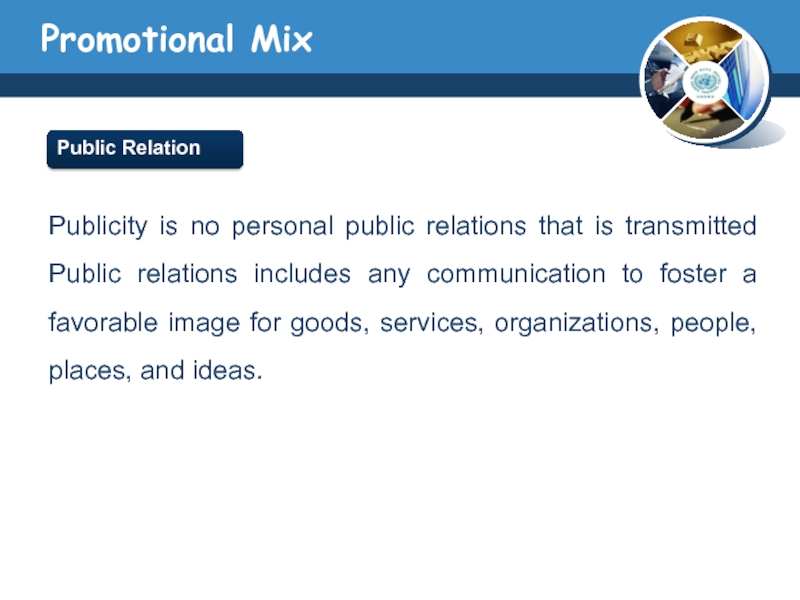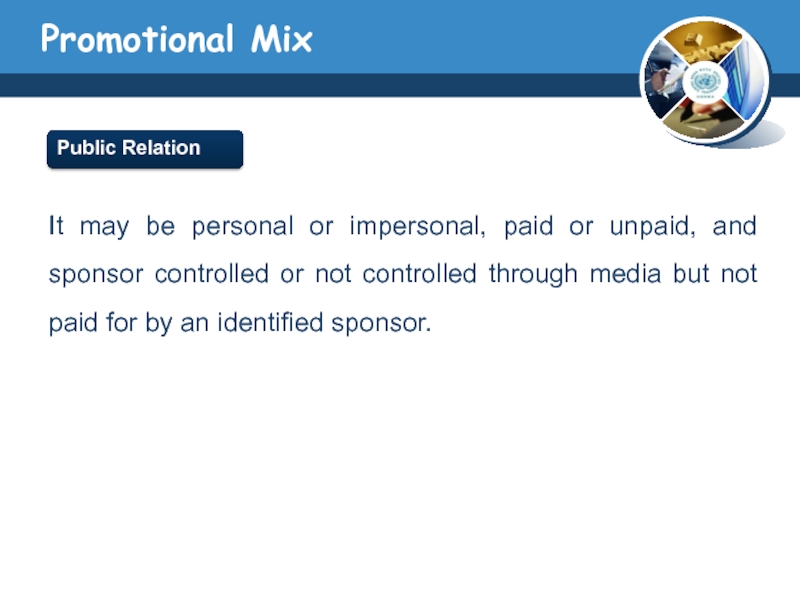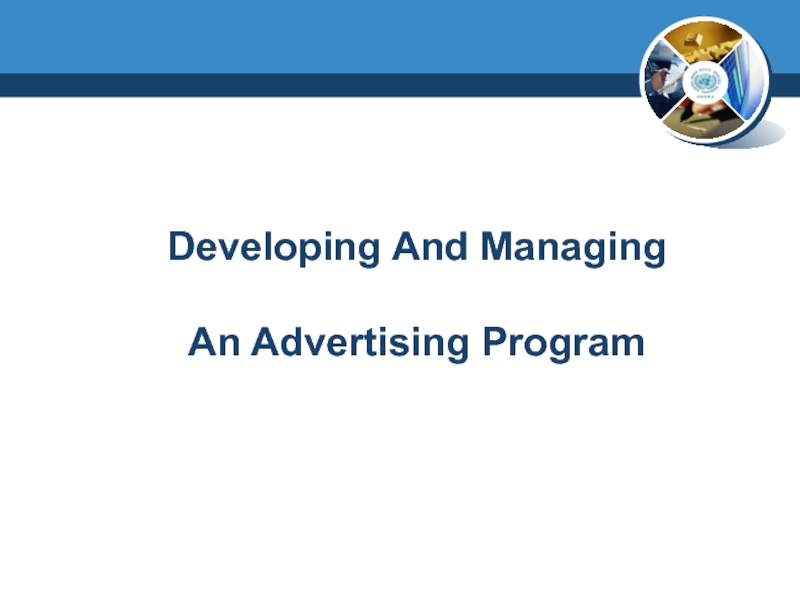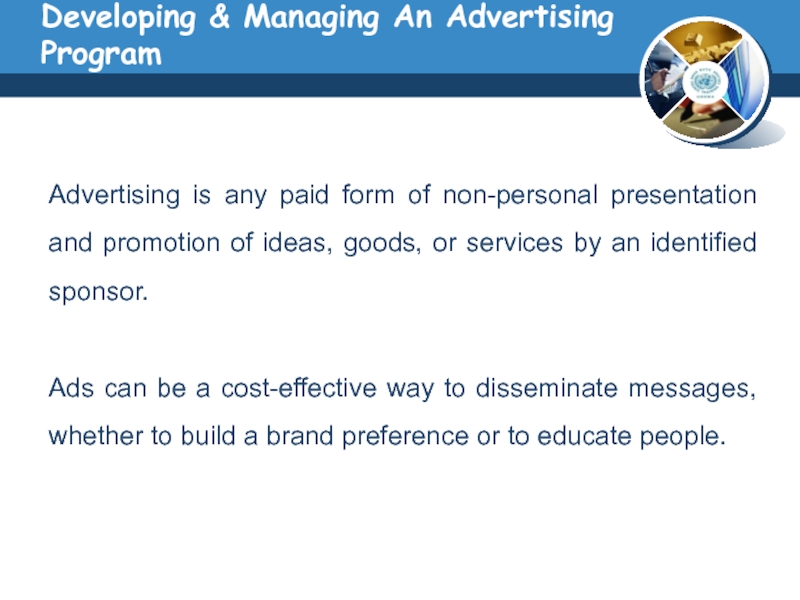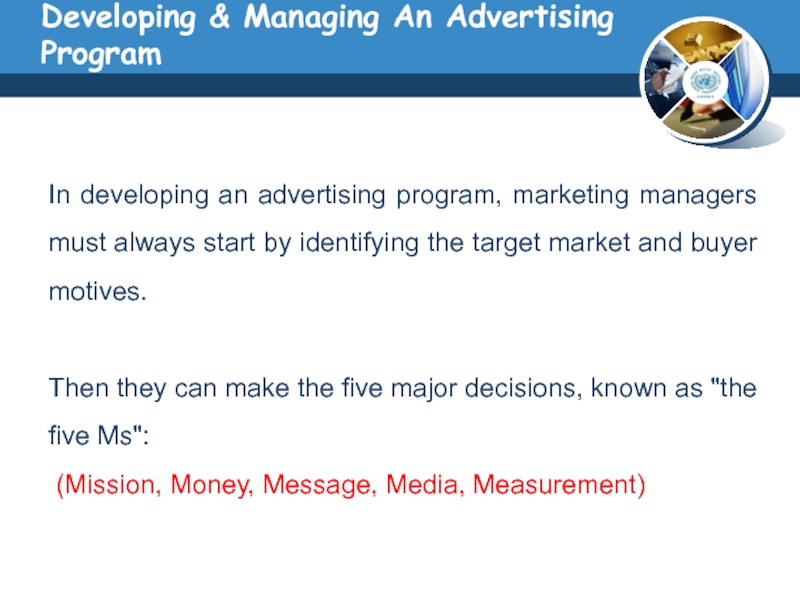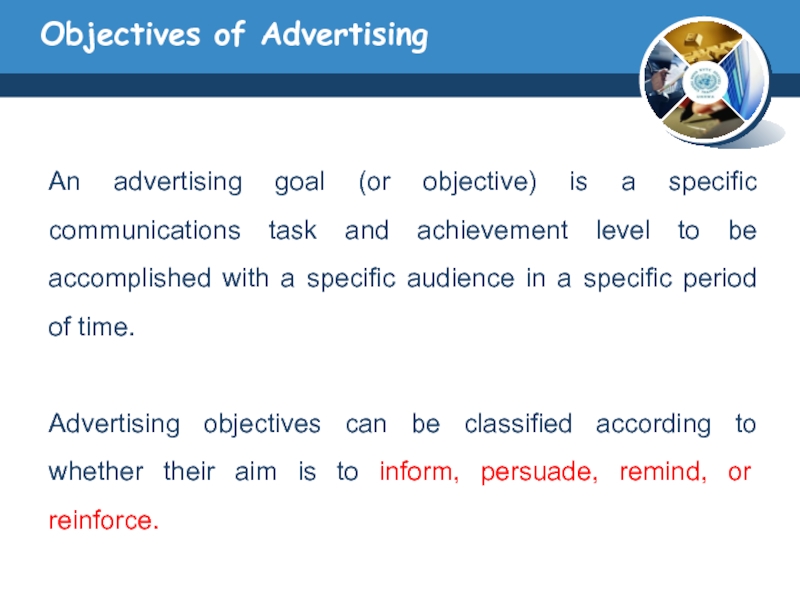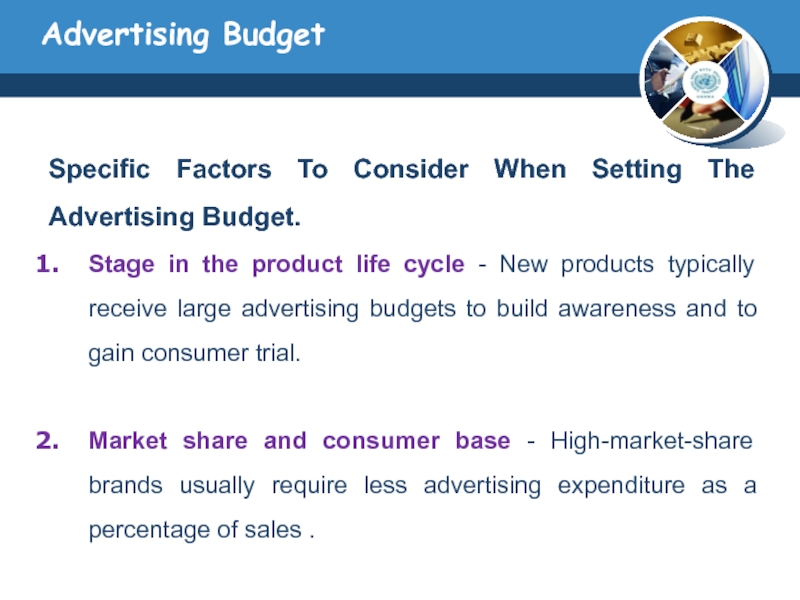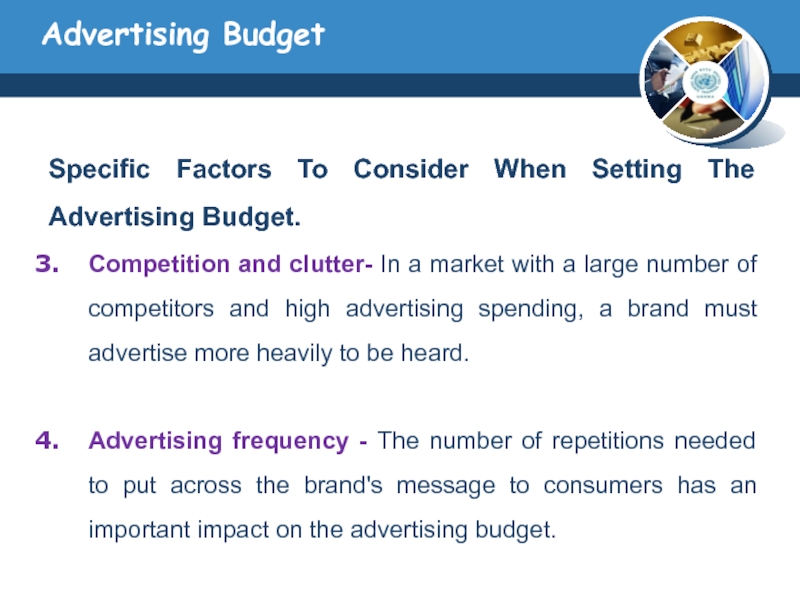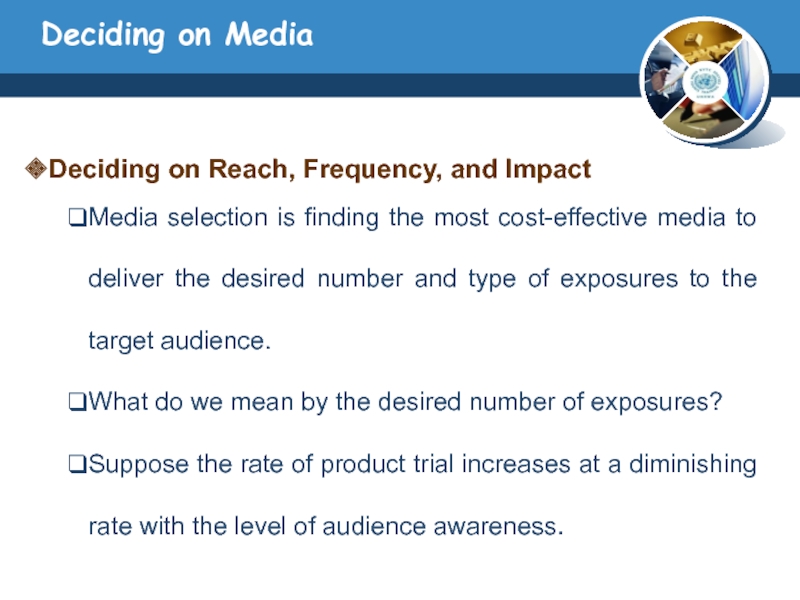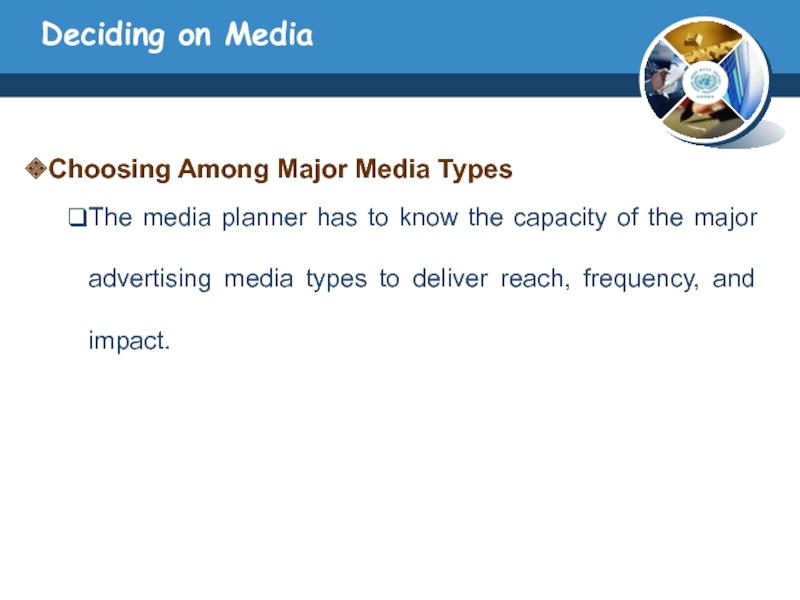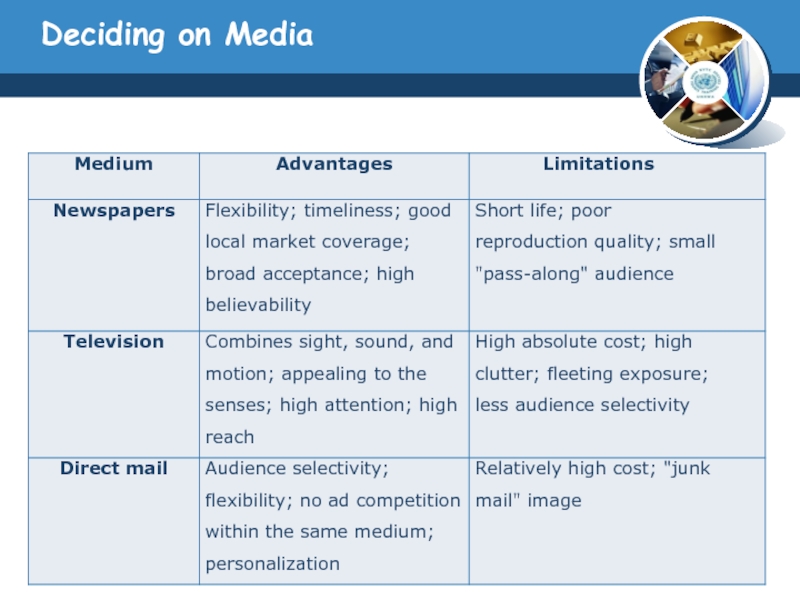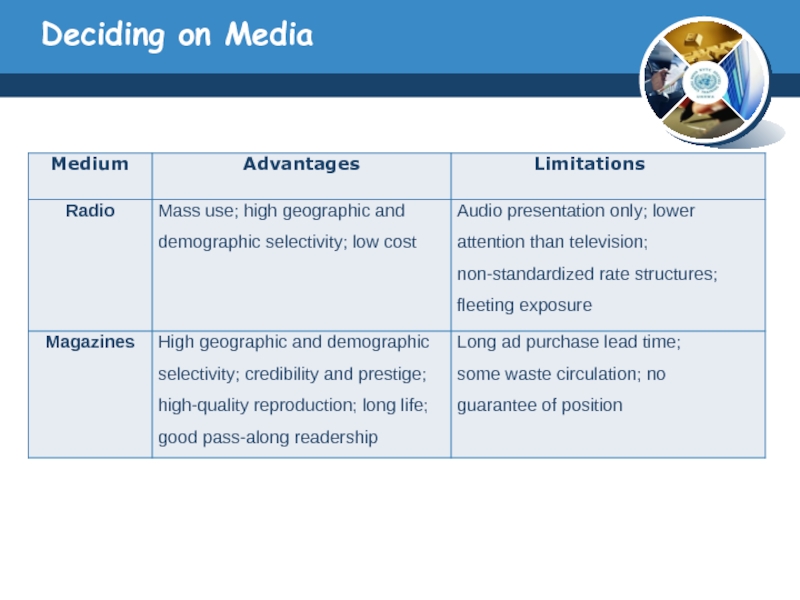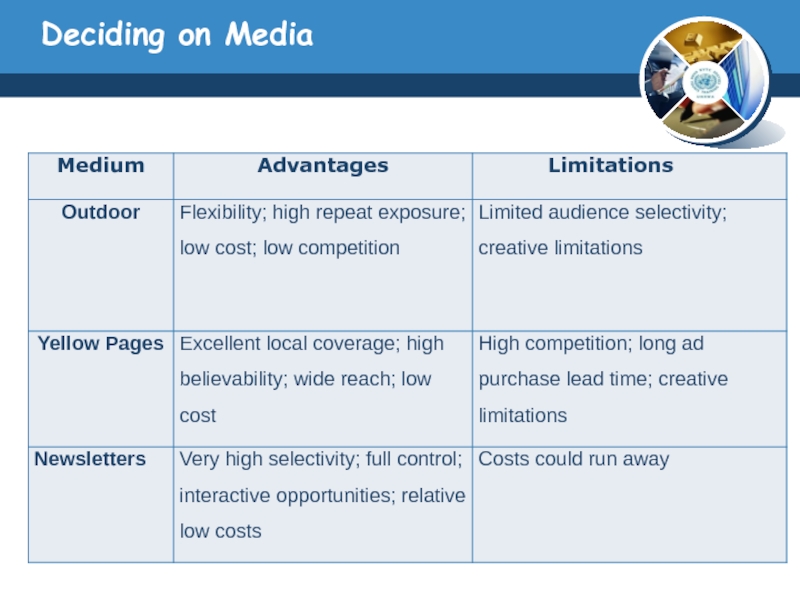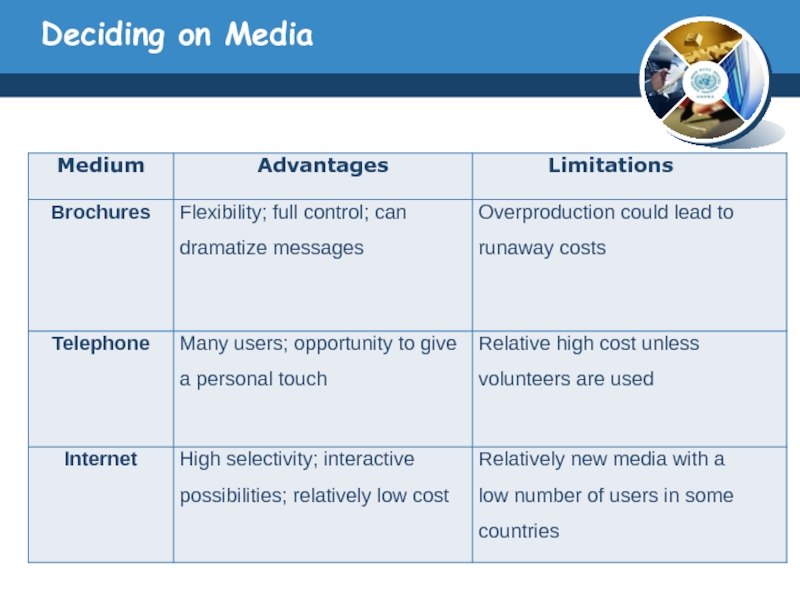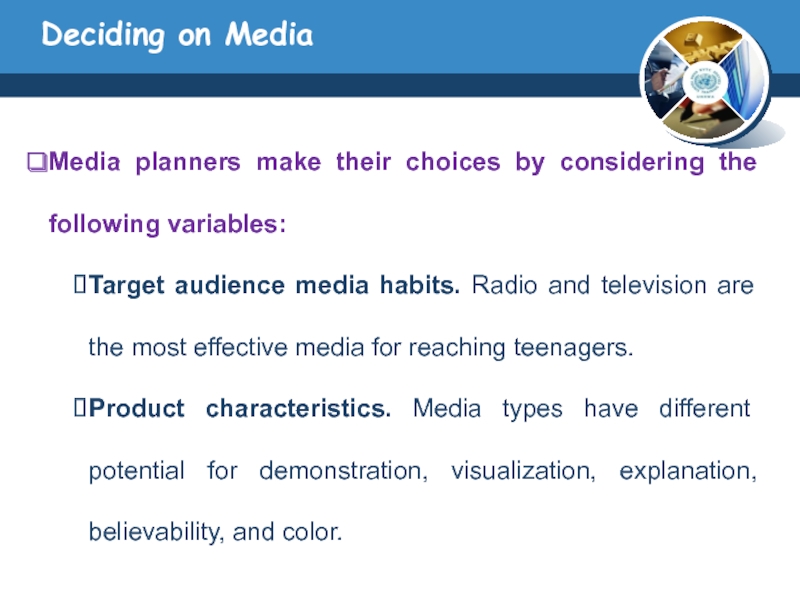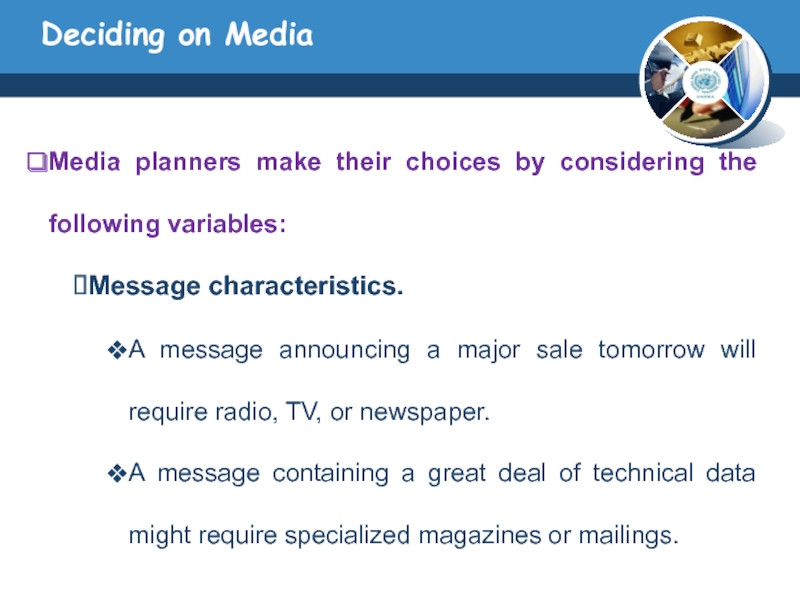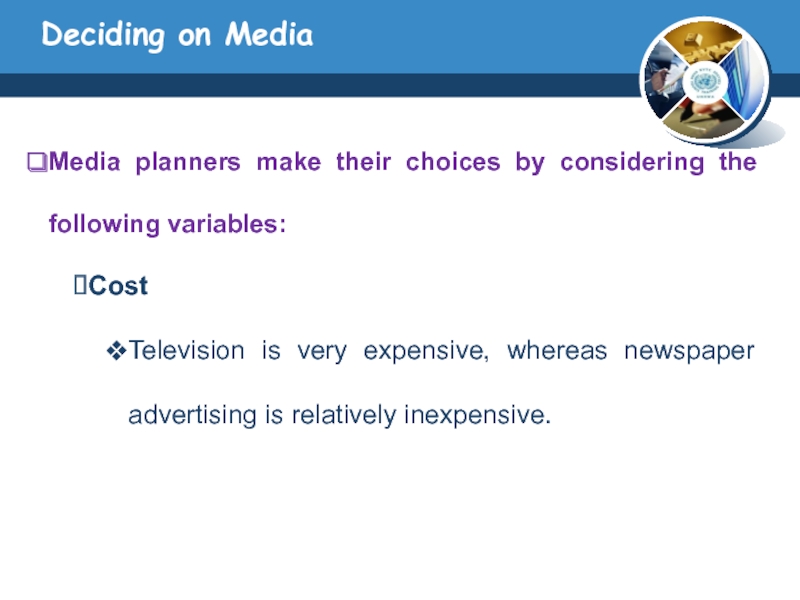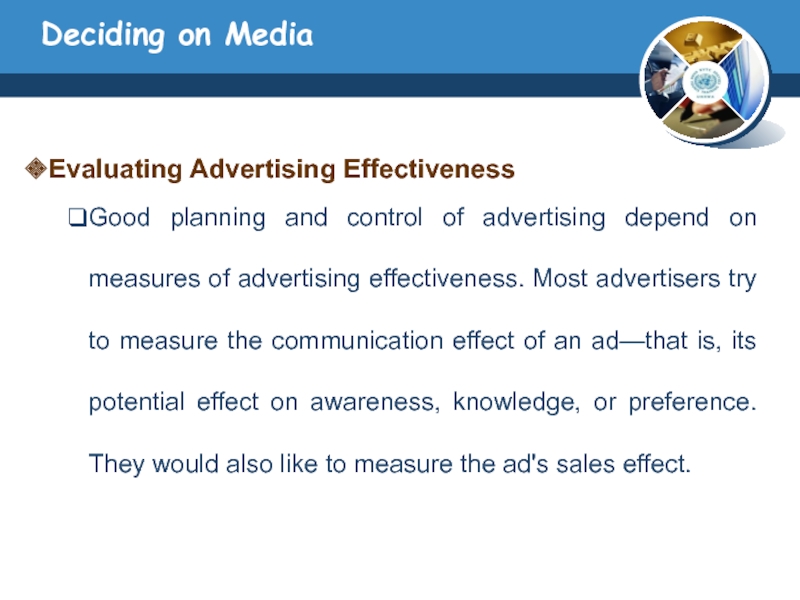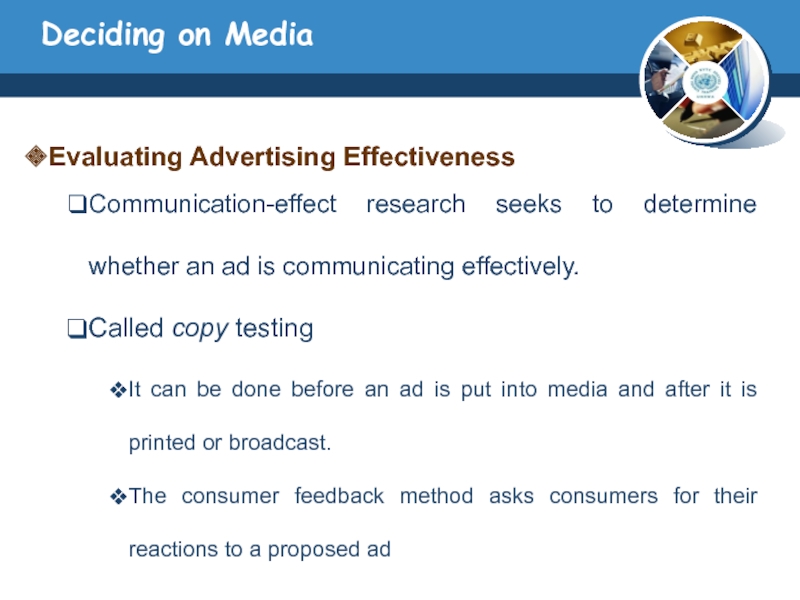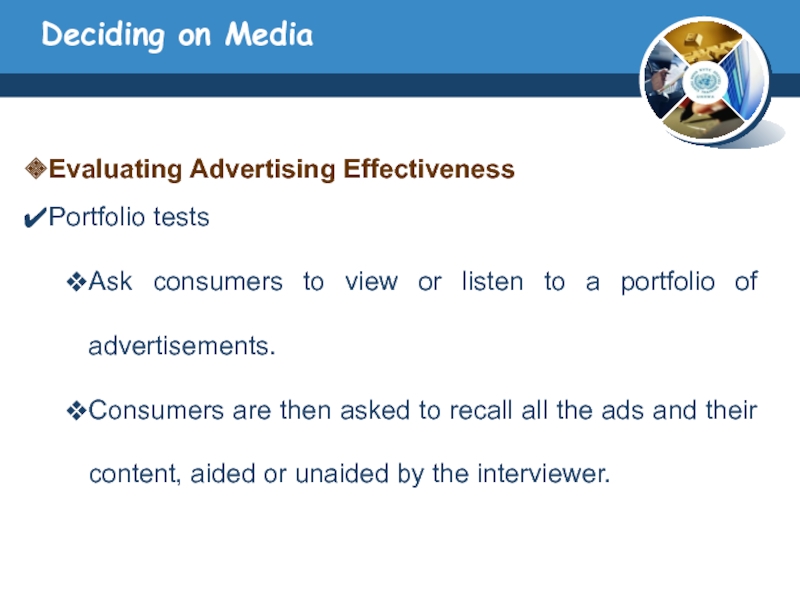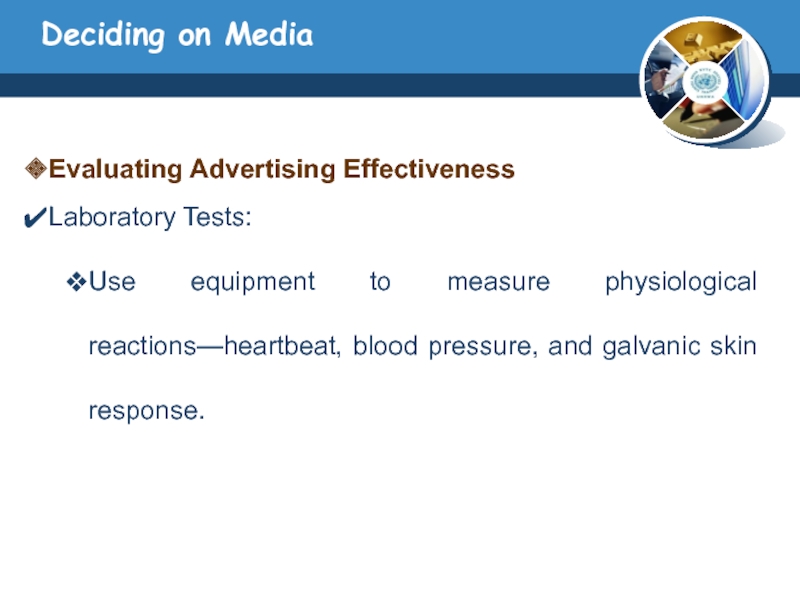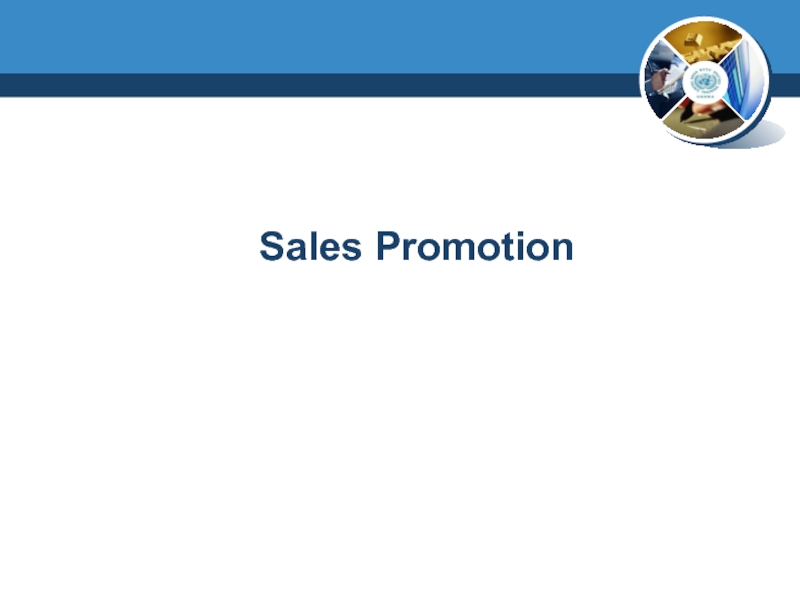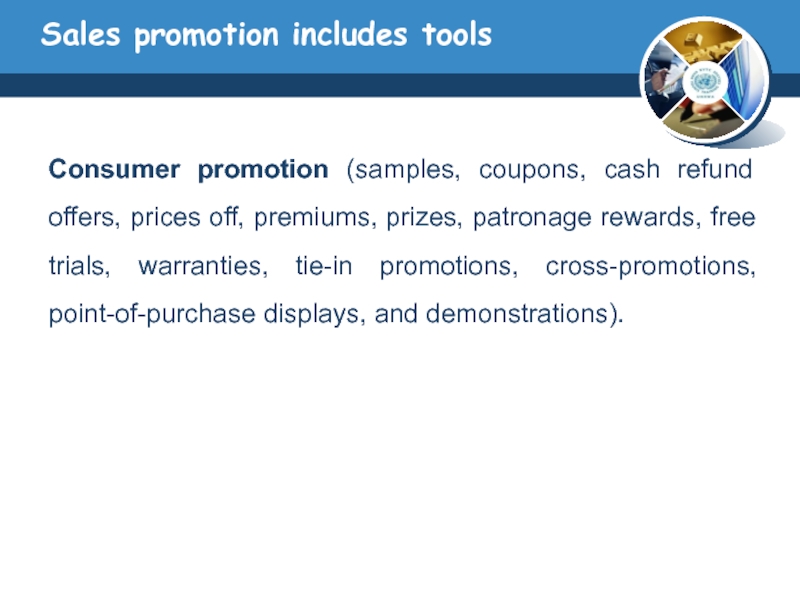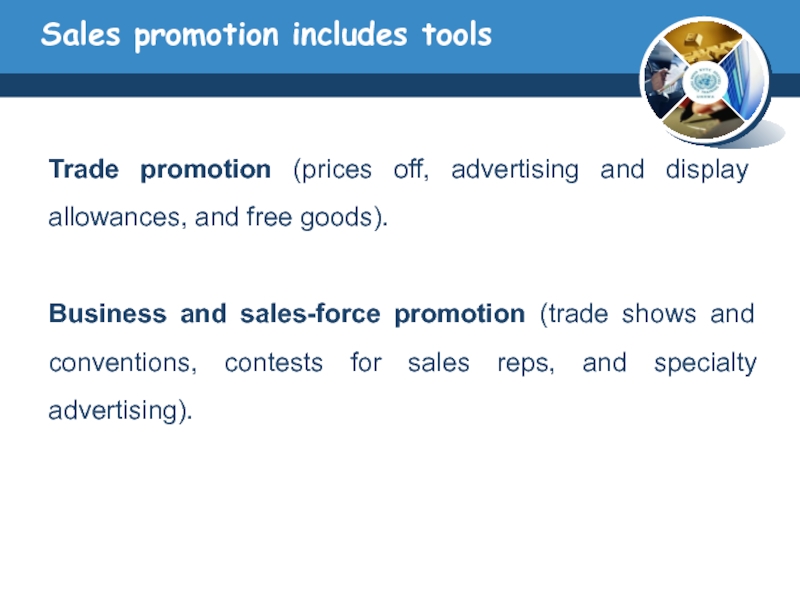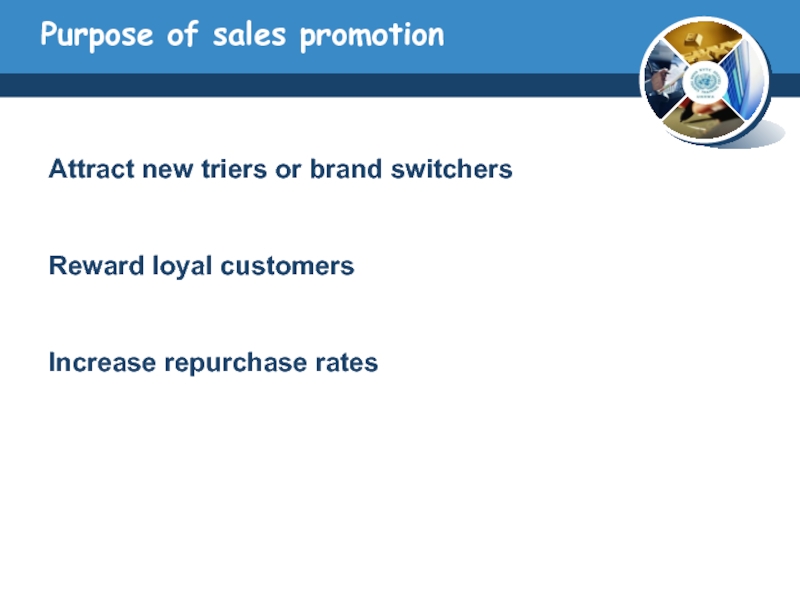- Главная
- Разное
- Дизайн
- Бизнес и предпринимательство
- Аналитика
- Образование
- Развлечения
- Красота и здоровье
- Финансы
- Государство
- Путешествия
- Спорт
- Недвижимость
- Армия
- Графика
- Культурология
- Еда и кулинария
- Лингвистика
- Английский язык
- Астрономия
- Алгебра
- Биология
- География
- Детские презентации
- Информатика
- История
- Литература
- Маркетинг
- Математика
- Медицина
- Менеджмент
- Музыка
- МХК
- Немецкий язык
- ОБЖ
- Обществознание
- Окружающий мир
- Педагогика
- Русский язык
- Технология
- Физика
- Философия
- Химия
- Шаблоны, картинки для презентаций
- Экология
- Экономика
- Юриспруденция
Promotion презентация
Содержание
- 1. Promotion
- 2. PROMOTION Promotion describes the methods used by
- 3. Promotion The communication Process Promotional mix
- 4. Promotion
- 5. Promotion Promotion represents the fourth element
- 6. Promotion objectives Advertising objectives can be
- 7. Communication Communication: is the sharing of
- 8. Communication
- 9. Promotional Mix
- 10. Promotional Mix Advertising ADVERTISING paid, impersonal
- 11. Promotional Mix Advertising
- 12. Promotional Mix Advertising
- 13. Promotional Mix Personal Selling Face to
- 14. Promotional Mix Personal Selling PERSONAL selling:
- 15. Promotional Mix Sales Promotion Sales promotion
- 16. Promotional Mix Public Relation Publicity is
- 17. Promotional Mix Public Relation It may
- 18. Developing And Managing An Advertising Program
- 19. Developing & Managing An Advertising Program
- 20. Developing & Managing An Advertising Program
- 21. Objectives of Advertising An advertising goal
- 22. Advertising Budget Specific Factors To Consider
- 23. Advertising Budget Specific Factors To Consider
- 24. Deciding on Media Deciding on Reach,
- 25. Deciding on Media Choosing Among Major
- 26. Deciding on Media
- 27. Deciding on Media
- 28. Deciding on Media
- 29. Deciding on Media
- 30. Deciding on Media Media planners make
- 31. Deciding on Media Media planners make
- 32. Deciding on Media Media planners make
- 33. Deciding on Media Evaluating Advertising Effectiveness
- 34. Deciding on Media Evaluating Advertising Effectiveness
- 35. Deciding on Media Evaluating Advertising Effectiveness
- 36. Deciding on Media Evaluating Advertising Effectiveness
- 37. Sales Promotion
- 38. Sales Promotion Sales promotion, a key
- 39. Sales promotion includes tools Consumer
- 40. Sales promotion includes tools Trade
- 41. Purpose of sales promotion Attract new
Слайд 2PROMOTION
Promotion describes the methods used by a business to inform, persuade
a target market about its product.
Promotion attempts to:
Attract new customers by heightening awareness of a particular product
Increase brand loyalty by reinforcing the image of the product
Encourage existing customers to purchase more of the product
Provide information so that customers can make informed decisions
Encourage new and existing customers to purchase new products.
Promotion attempts to:
Attract new customers by heightening awareness of a particular product
Increase brand loyalty by reinforcing the image of the product
Encourage existing customers to purchase more of the product
Provide information so that customers can make informed decisions
Encourage new and existing customers to purchase new products.
Слайд 3Promotion
The communication Process
Promotional mix
Developing Ad program
Personal Selling
Sales Promotion
Public Relation
Developing and
Managing an Advertising Program
Setting the Objectives
advertising budget factors
Deciding on Media
Setting the Objectives
advertising budget factors
Deciding on Media
Sales Promotion
Sales promotion includes tools
Purpose of sales promotion
Major Consumer-Promotion Tools
Marketing Public Relations (MPR)
MPR Role
Major Public Relations Tools
Direct Marketing
Слайд 5Promotion
Promotion represents the fourth element in the marketing mix (4 p’s)
Promotional
is a mix which consists of advertising, personal selling, sales promotional, and publicity.
Слайд 6Promotion objectives
Advertising objectives can be classified by primary purpose:
Inform
Introducing new products
Persuade
Becomes
more important as competition increases
Comparative ads
Remind
Most important for mature products
Comparative ads
Remind
Most important for mature products
Слайд 7Communication
Communication: is the sharing of meaning and requires five elements a
source, a massage, a receiver, and the process of encoding and decoding.
Source: the information sent by a source.
Massage: is new form of product.
Receiver: is a consumer who read, hears, or sees the massage are reviser.
Encoding: is the reverse at the process of having the receiver take a set of symbols, the massage, and transfer them back to an abstract idea.
Source: the information sent by a source.
Massage: is new form of product.
Receiver: is a consumer who read, hears, or sees the massage are reviser.
Encoding: is the reverse at the process of having the receiver take a set of symbols, the massage, and transfer them back to an abstract idea.
Слайд 10Promotional Mix
Advertising
ADVERTISING paid, impersonal communication regarding goods, services, organizations, people, places,
and ideas that is transmitted through various media by business firms, government and other nonprofit organizations, and individuals who are identified in the advertising message as the sponsor.
Слайд 13Promotional Mix
Personal Selling
Face to face communication is buyers to inform and
persuade them to buy.
On average, companies spend more money on personal selling than other elements of promo mix.
On average, companies spend more money on personal selling than other elements of promo mix.
Слайд 14Promotional Mix
Personal Selling
PERSONAL selling: involves oral communication with one or more
prospective buyers by paid representatives for the purpose of making sales.
Major advantages: are more persuasive.
Major disadvantages: are costly per individual reached.
Major advantages: are more persuasive.
Major disadvantages: are costly per individual reached.
Слайд 15Promotional Mix
Sales Promotion
Sales promotion activities are important to build traffic, attract
attention, generate increased sales, create excitement, and create a competitive advantage.
Sales promotion activities worldwide are at their highest levels.
Sales promotion activities worldwide are at their highest levels.
Слайд 16Promotional Mix
Public Relation
Publicity is no personal public relations that is transmitted
Public relations includes any communication to foster a favorable image for goods, services, organizations, people, places, and ideas.
Слайд 17Promotional Mix
Public Relation
It may be personal or impersonal, paid or unpaid,
and sponsor controlled or not controlled through media but not paid for by an identified sponsor.
Слайд 19Developing & Managing An Advertising Program
Advertising is any paid form of
non-personal presentation and promotion of ideas, goods, or services by an identified sponsor.
Ads can be a cost-effective way to disseminate messages, whether to build a brand preference or to educate people.
Ads can be a cost-effective way to disseminate messages, whether to build a brand preference or to educate people.
Слайд 20Developing & Managing An Advertising Program
In developing an advertising program, marketing
managers must always start by identifying the target market and buyer motives.
Then they can make the five major decisions, known as "the five Ms":
(Mission, Money, Message, Media, Measurement)
Then they can make the five major decisions, known as "the five Ms":
(Mission, Money, Message, Media, Measurement)
Слайд 21Objectives of Advertising
An advertising goal (or objective) is a specific communications
task and achievement level to be accomplished with a specific audience in a specific period of time.
Advertising objectives can be classified according to whether their aim is to inform, persuade, remind, or reinforce.
Advertising objectives can be classified according to whether their aim is to inform, persuade, remind, or reinforce.
Слайд 22Advertising Budget
Specific Factors To Consider When Setting The Advertising Budget.
Stage in
the product life cycle - New products typically receive large advertising budgets to build awareness and to gain consumer trial.
Market share and consumer base - High-market-share brands usually require less advertising expenditure as a percentage of sales .
Market share and consumer base - High-market-share brands usually require less advertising expenditure as a percentage of sales .
Слайд 23Advertising Budget
Specific Factors To Consider When Setting The Advertising Budget.
Competition and
clutter- In a market with a large number of competitors and high advertising spending, a brand must advertise more heavily to be heard.
Advertising frequency - The number of repetitions needed to put across the brand's message to consumers has an important impact on the advertising budget.
Advertising frequency - The number of repetitions needed to put across the brand's message to consumers has an important impact on the advertising budget.
Слайд 24Deciding on Media
Deciding on Reach, Frequency, and Impact
Media selection is finding
the most cost-effective media to deliver the desired number and type of exposures to the target audience.
What do we mean by the desired number of exposures?
Suppose the rate of product trial increases at a diminishing rate with the level of audience awareness.
What do we mean by the desired number of exposures?
Suppose the rate of product trial increases at a diminishing rate with the level of audience awareness.
Слайд 25Deciding on Media
Choosing Among Major Media Types
The media planner has to
know the capacity of the major advertising media types to deliver reach, frequency, and impact.
Слайд 30Deciding on Media
Media planners make their choices by considering the following
variables:
Target audience media habits. Radio and television are the most effective media for reaching teenagers.
Product characteristics. Media types have different potential for demonstration, visualization, explanation, believability, and color.
Target audience media habits. Radio and television are the most effective media for reaching teenagers.
Product characteristics. Media types have different potential for demonstration, visualization, explanation, believability, and color.
Слайд 31Deciding on Media
Media planners make their choices by considering the following
variables:
Message characteristics.
A message announcing a major sale tomorrow will require radio, TV, or newspaper.
A message containing a great deal of technical data might require specialized magazines or mailings.
Message characteristics.
A message announcing a major sale tomorrow will require radio, TV, or newspaper.
A message containing a great deal of technical data might require specialized magazines or mailings.
Слайд 32Deciding on Media
Media planners make their choices by considering the following
variables:
Cost
Television is very expensive, whereas newspaper advertising is relatively inexpensive.
Cost
Television is very expensive, whereas newspaper advertising is relatively inexpensive.
Слайд 33Deciding on Media
Evaluating Advertising Effectiveness
Good planning and control of advertising depend
on measures of advertising effectiveness. Most advertisers try to measure the communication effect of an ad—that is, its potential effect on awareness, knowledge, or preference. They would also like to measure the ad's sales effect.
Слайд 34Deciding on Media
Evaluating Advertising Effectiveness
Communication-effect research seeks to determine whether an
ad is communicating effectively.
Called copy testing
It can be done before an ad is put into media and after it is printed or broadcast.
The consumer feedback method asks consumers for their reactions to a proposed ad
Called copy testing
It can be done before an ad is put into media and after it is printed or broadcast.
The consumer feedback method asks consumers for their reactions to a proposed ad
Слайд 35Deciding on Media
Evaluating Advertising Effectiveness
Portfolio tests
Ask consumers to view or listen
to a portfolio of advertisements.
Consumers are then asked to recall all the ads and their content, aided or unaided by the interviewer.
Consumers are then asked to recall all the ads and their content, aided or unaided by the interviewer.
Слайд 36Deciding on Media
Evaluating Advertising Effectiveness
Laboratory Tests:
Use equipment to measure physiological reactions—heartbeat,
blood pressure, and galvanic skin response.
Слайд 38Sales Promotion
Sales promotion, a key ingredient in marketing campaigns, consists of
a collection of incentive tools, mostly short term, designed to stimulate quicker or greater purchase of particular products or services by consumers or the trade.
Whereas advertising offers a reason to buy, sales promotion offers an incentive to buy.
Whereas advertising offers a reason to buy, sales promotion offers an incentive to buy.
Слайд 39Sales promotion includes tools
Consumer promotion (samples, coupons, cash refund offers,
prices off, premiums, prizes, patronage rewards, free trials, warranties, tie-in promotions, cross-promotions, point-of-purchase displays, and demonstrations).
Слайд 40Sales promotion includes tools
Trade promotion (prices off, advertising and display
allowances, and free goods).
Business and sales-force promotion (trade shows and conventions, contests for sales reps, and specialty advertising).
Business and sales-force promotion (trade shows and conventions, contests for sales reps, and specialty advertising).
Слайд 41Purpose of sales promotion
Attract new triers or brand switchers
Reward loyal customers
Increase
repurchase rates

